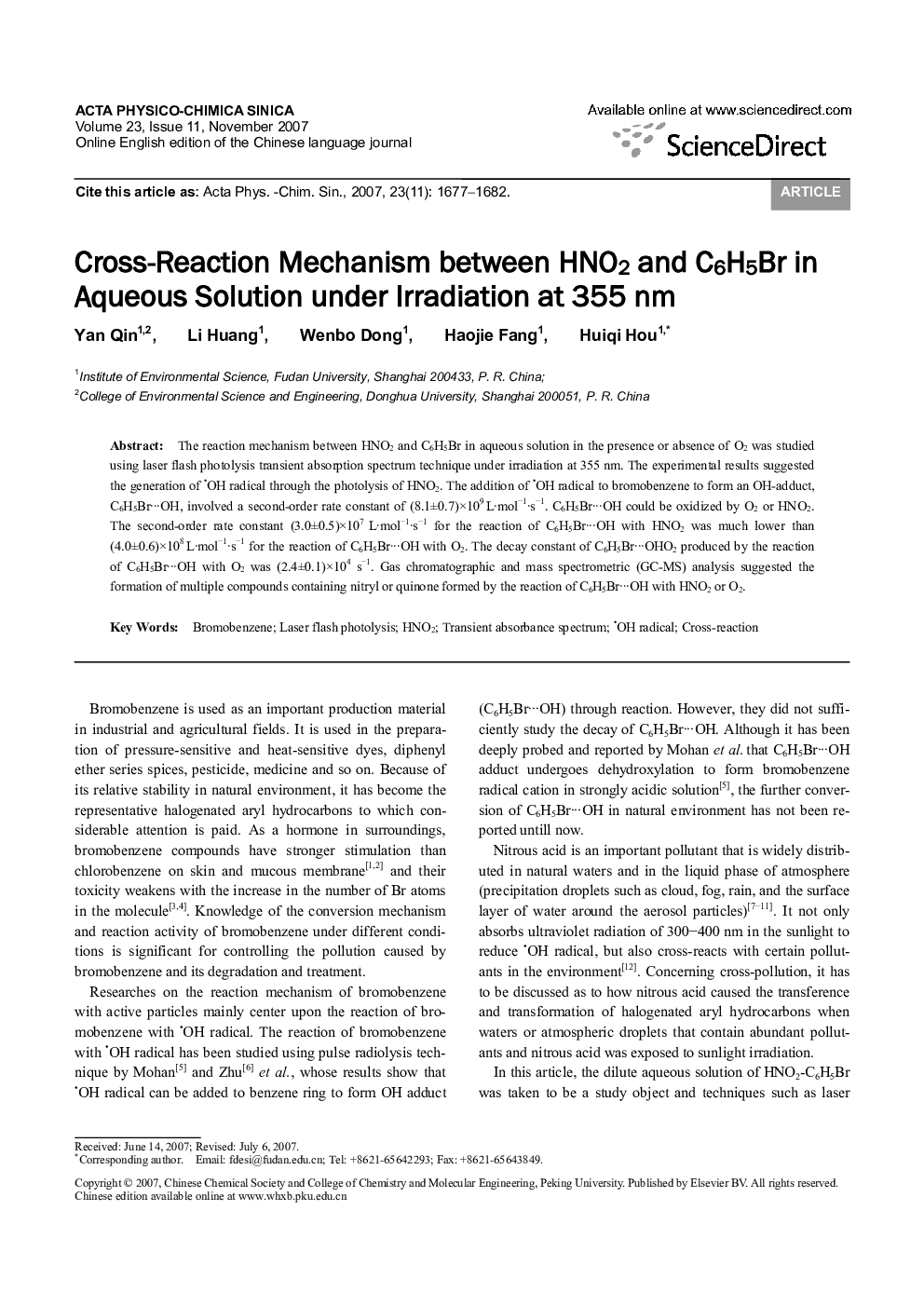| Article ID | Journal | Published Year | Pages | File Type |
|---|---|---|---|---|
| 7831982 | Acta Physico-Chimica Sinica | 2007 | 6 Pages |
Abstract
The reaction mechanism between HNO2 and C6H5Br in aqueous solution in the presence or absence of O2 was studied using laser flash photolysis transient absorption spectrum technique under irradiation at 355 nm. The experimental results suggested the generation of ·OH radical through the photolysis of HNO2. The addition of ·OH radical to bromobenzene to form an OH-adduct, C6H5Br···OH, involved a second-order rate constant of (8.1±0.7)à 109 L·molâ1·sâ1. C6H5Br···OH could be oxidized by O2 or HNO2. The second-order rate constant (3.0±0.5)à 107 L·molâ1·sâ1 for the reaction of C6H5Br···OH with HNO2 was much lower than (4.0±0.6)à 108 L·molâ1·sâ1 for the reaction of C6H5Br···OH with O2. The decay constant of C6H5Br···OHO2 produced by the reaction of C6H5Br···OH with O2 was (2.4± 0.1)à 104 sâ1. Gas chromatographic and mass spectrometric (GC-MS) analysis suggested the formation of multiple compounds containing nitryl or quinone formed by the reaction of C6H5Br···OH with HNO2 or O2.
Related Topics
Physical Sciences and Engineering
Chemistry
Physical and Theoretical Chemistry
Authors
Yan Qin, Li Huang, Wenbo Dong, Haojie Fang, Huiqi Hou,
